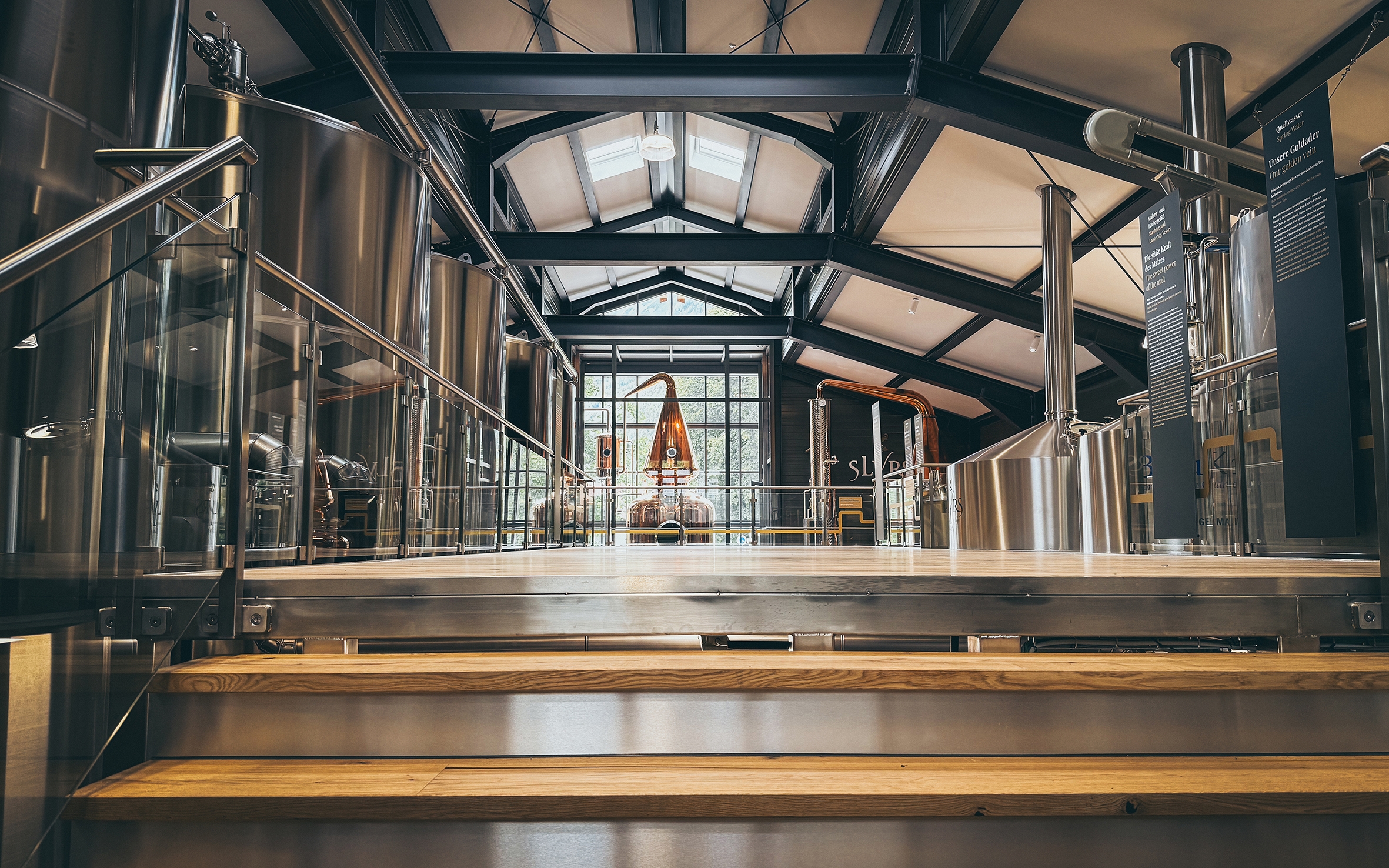Prize(s) Honorable Mentions
Lighting Design/Product Company Flavia Thumshirn Licht & Design
Lead Designers Flavia Thumshirn
Architecture Company Peter Krogoll
Interior Design Company UndPlus
Client SLYRS Destillery GmbH & KoKG
Photo Credits Marcus Zumbansen
Completion Date 27.06.2025
Project Location Schliersee
Entry DescriptionThe lighting design of the SLYRS Campus weaves architecture, function, and emotion into a captivating journey that guides visitors from the first step to the final impression. At the entrance, a glowing panorama of Lake Schliersee sets the scene, framed by green fabric panels and streaks of light that evoke a sunlit forest. Along the tour, spotlights and backlit displays highlight each station, inviting exploration and discovery.
A mysteriously lit oversized cask leads into the central barrel hall, where endless rows of oak barrels and the scent of the “angels’ share” create an atmosphere rich with character. Light beams emphasize paths, height, and depth, while a showcase barrel reveals the natural evaporation of maturation. In the treasure chamber, warm, subdued light creates a sense of exclusivity, with spotlights illuminating selected casks like precious artifacts. The whisky offered for tasting gleams in golden tones.
The journey concludes on a bright visitor platform overlooking the distillery, where modern technology meets atmospheric design. The highlight awaits at the center: a five-meter-high copper still encased in glass. Lit like a stage for liquid gold, it forms the unforgettable finale of the experience.
The result is an immersive world where light guides, tells stories, and reveals the essence of SLYRS whisky—just as multifaceted as the whisky itself.
Sustainability ApproachThe design process prioritized the use of regional and durable materials to reduce environmental impact. Lighting elements, including brass and metal fittings, were selected for their recyclability and long service life.
All luminaires are LED-based with high luminous efficacy and long operational life.
Adaptive lighting control systems (motion sensors, dimming strategies, and scene settings) ensure that lighting is only active when required. For example, in working areas, light levels increase to 100% only during operational activity and remain dimmed otherwise.
Zoned lighting differentiates between visitor and production areas, ensuring minimal energy consumption while maintaining required safety and atmospheric levels.
The system was designed for long-term maintainability and flexibility:Fixtures are accessible for easy service and part replacement, extending lifespan.

